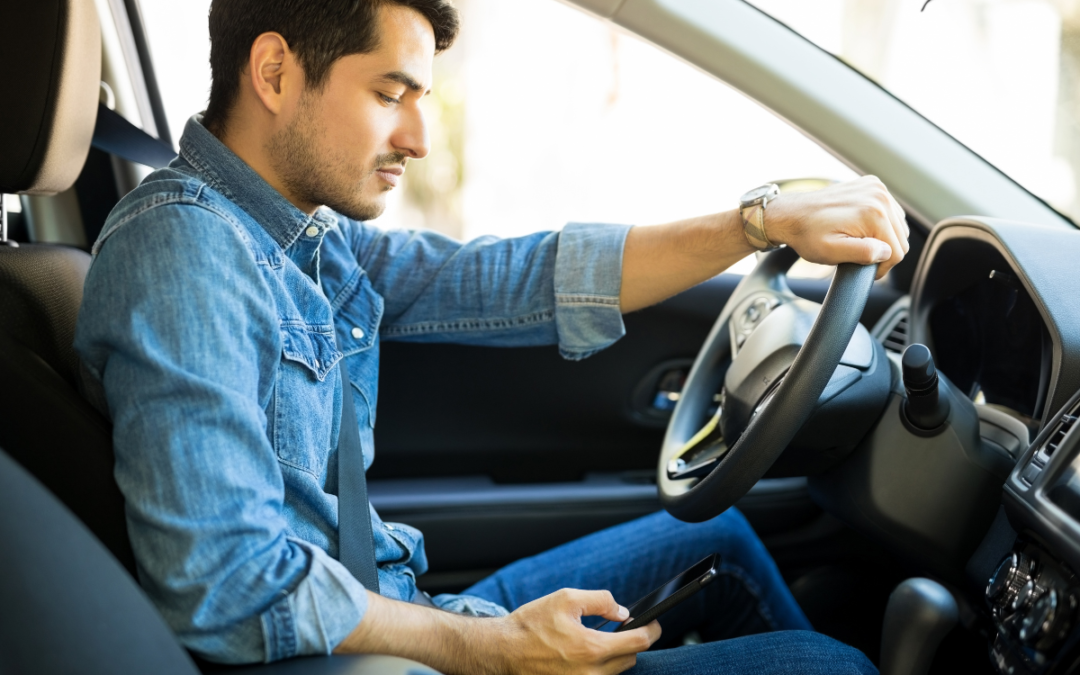Texting and Driving: Why Your Last Text Might Be Your Last
In the digital age, smartphones have become central to our lives, but their use has also introduced new risks, particularly on the road. Texting while driving combines three dangerous types of distraction—visual, manual, and cognitive—making it one of the most alarming behaviors a driver can engage in. This post explores why texting and driving is so dangerous and what can be done to prevent it.

The Realities of Distracted Driving
Texting while driving is alarmingly common despite being illegal in many places. According to the National Highway Traffic Safety Administration (NHTSA), texting is the most alarming distraction. Sending or reading a text takes your eyes off the road for 5 seconds on average, which is enough time to cover the length of a football field when driving at 55 mph.
The Statistics Speak Volumes
The consequences of texting and driving can be fatal. The NHTSA reports that in 2022, approximately 3,308 people were killed in motor vehicle crashes involving distracted drivers. Teens were reported as the largest age group distracted at the time of fatal crashes. These statistics are not just numbers; they represent lives cut short and families shattered.
Understanding the Law
Many states have enacted laws against texting while driving, recognizing the severe risks it poses. These laws vary by state but generally include fines, and in some cases, points against the driver’s license or even criminal charges for serious incidents.
Technology as a Double-Edged Sword
While technology has contributed to the problem of distracted driving, it also offers solutions. Many new vehicles come equipped with hands-free systems that allow drivers to stay connected without handling their phones. Apps that block incoming texts and calls while driving are also available and can be a helpful tool for those who find it hard to ignore their phones.
Prevention
Preventing texting and driving requires a combination of education, technology, and enforcement. Here are a few strategies:
-
- Education and Awareness: Programs targeted at drivers, especially teens, highlight the dangers of texting while driving and the legal repercussions that can follow.
- Technology Solutions: Utilize apps and in-car systems that help minimize distractions. Setting your phone to “Do Not Disturb” mode while driving can also prevent notifications from becoming a temptation.
- Community and Peer Pressure: Encouraging a culture of safety among peers and community members can reduce texting and driving. Friends and family should speak up when they see someone texting behind the wheel.
- Pledges and Agreements: Many organizations offer safe driving pledges that teens and new drivers can sign, committing them not to text and drive. These pledges can be supported with regular reminders of the importance of safe driving.

Texting and Driving: Why Your Last Text Might Be Your Last
Texting and driving is an epidemic that needs immediate attention. The decision to ignore a text while driving can be the difference between life and death. Remember, no text is worth a life. It’s essential to educate yourself and your loved ones about the risks of texting while driving and to take active steps to eliminate this dangerous behavior. Your last text should never be a life-ending one.
Drive with Confidence!
Keep up with all the latest driving news. Expolre our blog packed with essential tips and expert advice on all things related to DRIVING!




